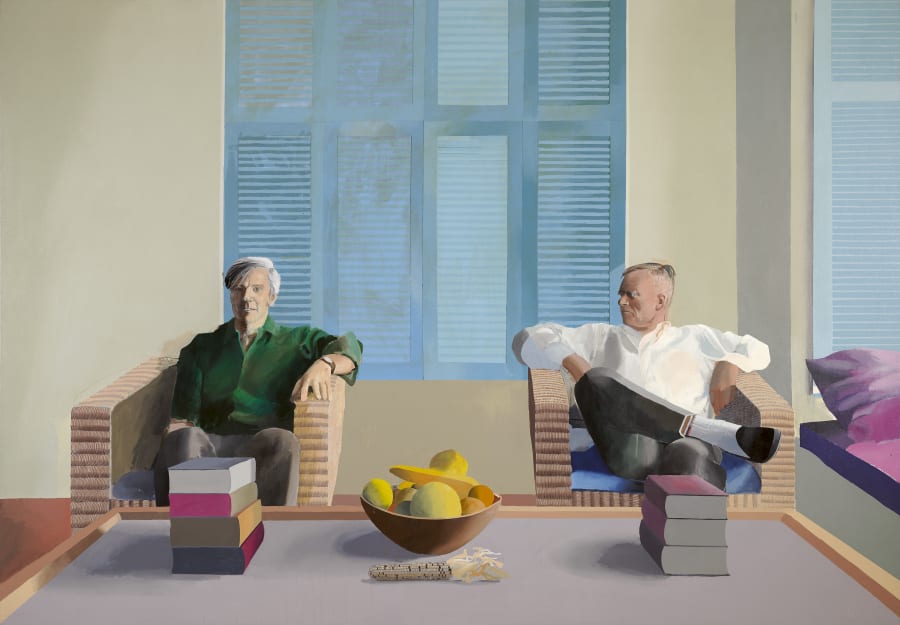For a very long time, 72-year-old Los Angeles-based painter Takako Yamaguchi avoided popularity on purpose. For nearly half a century, she has sidestepped the aesthetics favored by the art world, and instead focused on styles that fell out of fashion decades before. But in the past two years, Yamaguchi’s work has seen a surge of attention: strong auction results, inclusion in the 2024 Whitney Biennial in New York, and a solo exhibition this summer at the Museum of Contemporary Art, Los Angeles. So what is it that makes the work feel so vital today?
Born in Okayama, Japan, in 1952, Yamaguchi moved to the United States for her studies, and eventually settled in Los Angeles, where she’s lived since 1978. She came up during a time when Western Modernism’s insistence on detachment and purity – championed by movements like Minimalism and Formalism – pushed more decorative or sentimental modes to the fringe. Early on, Yamaguchi was drawn to the remnants of those bygone styles, or what she has called the ‘trash-heap of discarded ideals.’ By synthesizing motifs from different times and cultures – including Art Nouveau, European Romanticism, American Transcendentalism, and Mexican socialist murals – she complicated fixed ideas about where art comes from and who it belongs to.
Various series have highlighted her influences: The ‘Innocent Bystander’ series (1987–89), for instance, blends elements from Japanese decorative arts and Western allegory by placing Renaissance nudes in dreamlike landscapes. Her ‘Smoking Woman’ series from the 1990s revisited Art Deco decades after its decline, depicting reclining Asian women framed by ornamentation, bronze leaf, and cats. In the 2010s, she turned the lens on herself with stark photorealistic paintings of her upper torso, dressed in trim clothing.
More recently, Yamaguchi has been painting semi-abstract seascapes in oil and bronze leaf. Defined by crisp lines, graphic gradients, and rhythmic repetition, these self-contained compositions push further into abstraction while retaining her fascination with pattern, surface, and distortion. Their surfaces ripple with braids, tubes, waves, zigzags, knots, and metallic swirls.
It may be these seascapes that sparked the current wave of interest; in 2023, they were the focus of a solo exhibition at Ortuzar in New York. The following year, several were included in the 2024 Whitney Biennial. Now, MOCA is presenting them in a dedicated solo exhibition – Yamaguchi’s first at a major museum – on view through January 4, 2026. And it’s not just galleries and museums taking notice – the market is responding too. Last year, her 1994 painting Catherine and Midnight sold at Sotheby’s London for over $1.11 million (with fees) on an estimate of $500,000 to $750,000. Ortuzar dedicated a solo booth to Yamaguchi at Art Basel Paris in 2024, selling out on the first day. Other works from the ‘Smoking Woman’ series have also exceeded their estimates at auction, prompting a flurry of media attention and the art world to ask: 'Who is Takako Yamaguchi?’
The newfound popularity is unlikely to change the artist. ‘I still think of myself as somewhat [an] outsider,’ she said in a recent interview with MOCA. But it makes sense why audiences are drawn to her work today: In an era when everything is smoothed over and optimized, eccentricity stands out. Just as dissonance makes a piece of music interesting, or our eyes are pulled toward the one dancer who’s out of step, Yamaguchi’s paintings hum with an exciting tension – strange, irreverent, and defiant. The recognition feels long overdue.
Takako Yamaguchi is represented by Ortuzar (New York).
Elliat Albrecht is a writer and editor based in Canada. She holds a BFA in Critical and Cultural Practices from Emily Carr University of Art + Design and an MA in Literary and Cultural Studies from the University of Hong Kong.
Caption for header image: Artworks by Takako Yamaguchi at Ortuzar Projects’s booth at Art Basel Paris 2024.
Published on July 16, 2025.


